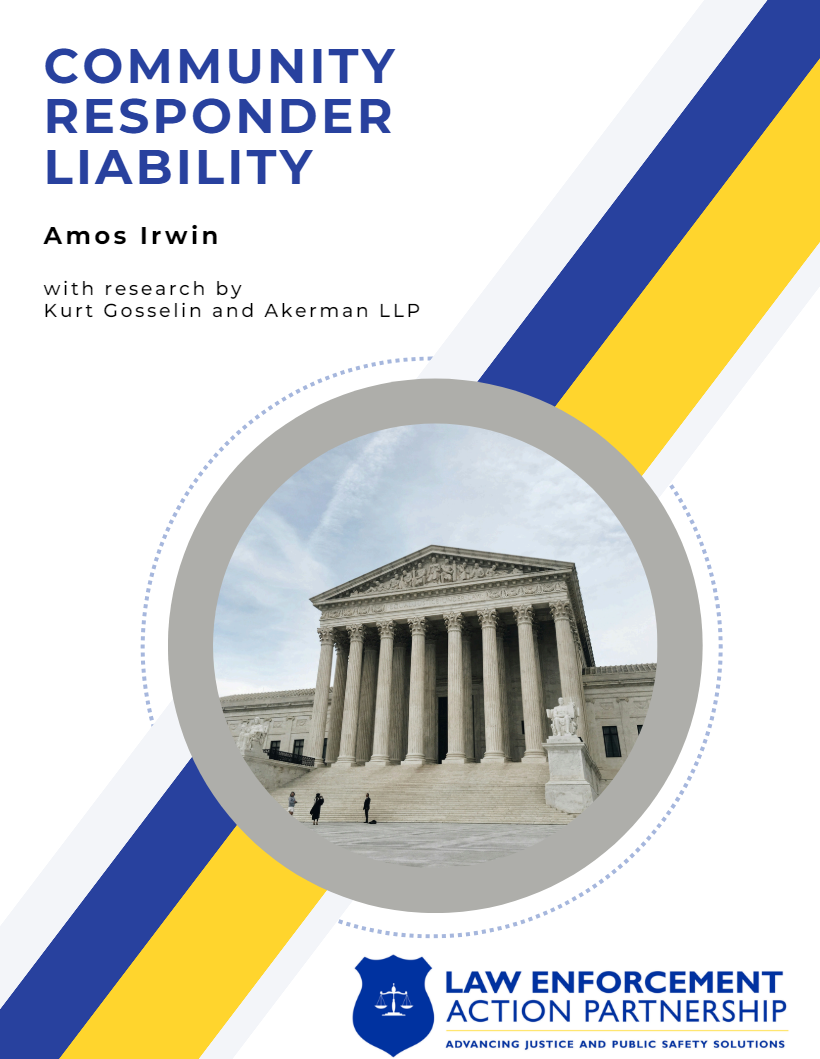COMMUNITY RESPONDER LIABILITY REPORT
Many cities are now dispatching unarmed "community responders" rather than police to low-risk 9-1-1 calls. City officials have asked if community responder programs increase their legal liability risk. We condense months of research into a report that provides city officials, attorneys, and community members with a framework to understand community responder liability across the 50 states.
How to Use this Report
- City officials deciding whether or not to create a community responder program – or state or federal officials considering funding such programs – can review our findings in the Executive Summary.
- City attorneys asked to assess liability risk of community responder programs – or state legislators considering legislative protections – can review the detailed discussions of the four sources of liability, as well as additional state-specific information in the appendix.
- Program directors and city risk managers seeking to minimize liability in planning a community responder program can review the Liability Protection section, including Policy and Training, Insurance, and Contracts.
- Community members seeking to understand a city official’s liability concerns can review the Executive Summary and Introduction. They can ask the official to specify which of the four sources pose a concern, and then they can review that particular section.
Disclaimer
This report is intended only as guidance and does not constitute legal advice. The authors have attempted to make it as generally applicable and current as possible, but it is not comprehensive and it will not be regularly updated to reflect changes in law. City officials should consult with their own attorneys for authoritative legal advice.





